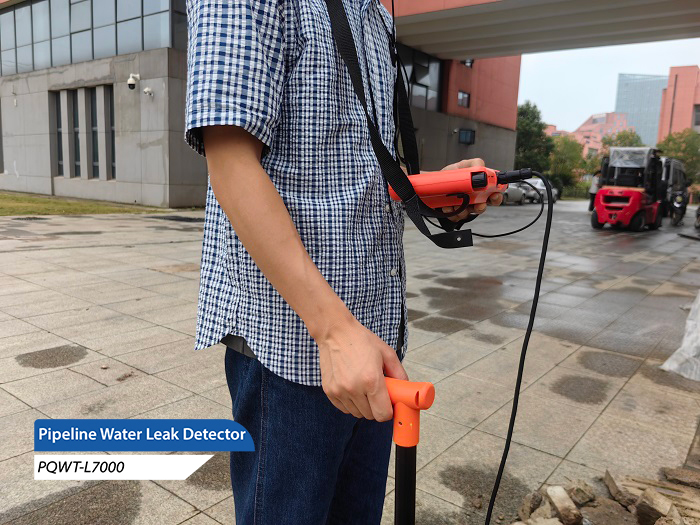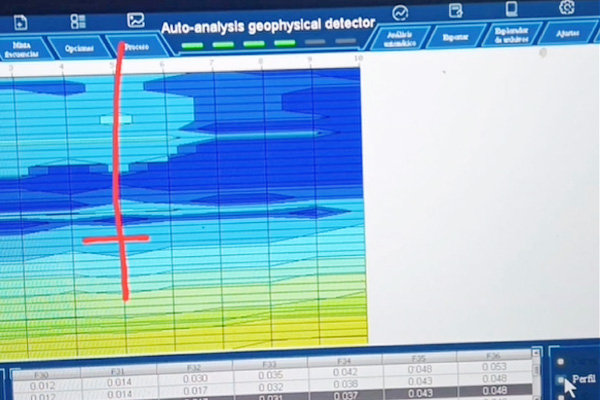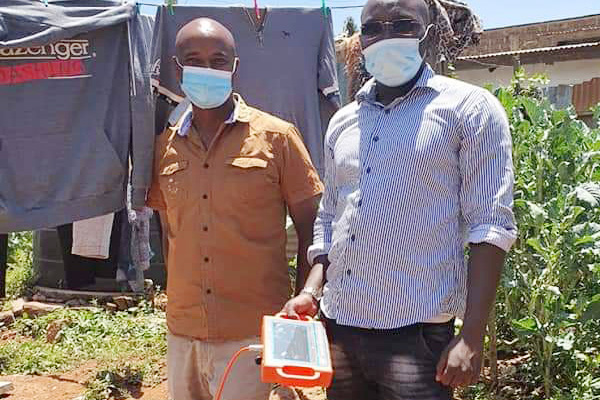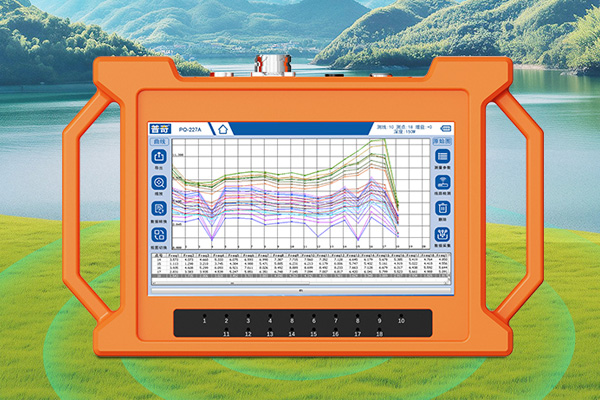Pipeline leak detector is an important tool for detecting underground pipeline leaks, widely used in urban water supply, heating, gas supply and other fields. By using technologies such as sound waves/vibrations, gas tracking, temperature measurement, and pressure testing, pipeline leak detectors can accurately locate leakage points, improve detection efficiency, and ensure public safety. This article will provide a detailed introduction to several ground monitoring methods for pipeline leak detectors.

1. Sound wave/vibration method
The acoustic/vibration method is one of the most commonly used methods for pipeline leak detection. When water or other fluids leak from a damaged area, they produce specific frequencies of sound or small vibrations. The leak detector can capture this sound signal and enhance it through an amplifier before transmitting it to the operator. Based on the changes in sound intensity, the location of the leak can be roughly determined.
Working principle: The leak detector is equipped with a highly sensitive microphone or sensor, which can capture weak sound signals transmitted from underground. After amplification and processing, these signals can be displayed on headphones or screens to help the operator locate the leakage point.
Advantages: This method is easy to operate, has a wide range of applications, and can detect pipelines of different materials.
Disadvantages: In noisy environments, sound signals may be interfered with, affecting detection accuracy.
2. Infrared thermography method
Infrared thermography uses an infrared camera to capture and analyze the temperature distribution of the surrounding environment of a pipeline. When there is a liquid leak, the temperature around the leak point usually changes, forming an abnormal temperature zone. Through infrared imaging, these abnormal areas can be identified and potential leakage sources can be identified.
Working principle: Infrared cameras capture thermal radiation around underground pipelines and convert it into visually distinguishable images. The temperature anomaly at the leakage point will be displayed on the infrared image.
Advantages: Infrared thermal imaging method can intuitively display temperature abnormal areas and is suitable for detecting large-area pipeline networks.
Disadvantages: Underground drainage, water accumulation, and non leakage factors may cause changes in infrared radiation, affecting detection accuracy.
3. Gas tracking method
For certain types of pipelines, such as natural gas pipelines, gas tracking methods can be used for detection. This method first requires injecting a harmless and easily detectable gas (such as helium) into the pipeline, and then using specially designed instruments to move along the pipeline path to detect changes in gas concentration.
Working principle: After injecting tracking gas into the pipeline, use a gas concentration detector to move along the pipeline. Once an abnormal increase in gas concentration is detected in a certain area, it indicates that there may be a leakage problem.
Advantages: Gas tracking method can accurately locate leakage points and is suitable for pipeline detection of toxic or flammable and explosive gases such as natural gas.
Disadvantages: It requires injecting gas into the pipeline, which is relatively complex to operate and may cause certain pressure on the pipeline.
4. Stress testing method
The pressure testing method is usually used for the installation of new pipelines or regular inspections of old pipelines. By closing all outlet valves, a closed space is formed inside the pipeline, and then the internal pressure is gradually increased to a certain level and maintained for a period of time. If a pressure drop rate exceeding the normal range is observed during this period, it indicates the possibility of unsealed connection points or other forms of defects.
Working principle: By conducting a pressure test, observe the changes in pressure inside the pipeline. If the pressure drops too quickly, it indicates that there is a problem of leakage or poor sealing.
Advantages: The pressure testing method can comprehensively inspect the sealing performance of pipelines and is suitable for the detection of large-scale pipeline networks.
Disadvantages: The pipeline needs to be closed for pressure testing, which may affect normal water or gas supply.
Application scenarios
The ground monitoring method of pipeline leak detectoris widely used in the following scenarios:
Maintenance of urban tap water pipeline network: Regularly inspect tap water pipelines, promptly detect and repair leakage points, and ensure water supply safety.
Monitoring of cooling circulation systems in industrial production processes: monitoring pipeline leaks in industrial cooling circulation systems to ensure normal production operation.
Security management of natural gas transmission network: using gas tracking method to detect natural gas pipeline leaks and ensure public safety.
Efficiency evaluation of farmland irrigation system: detecting leaks in irrigation pipelines, improving irrigation efficiency, and saving water resources.
Conclusion
There are various ground monitoring methods for pipeline leak detectors, each with its own advantages and disadvantages. In practical applications, appropriate detection methods should be selected based on specific circumstances. With the continuous emergence of new materials and technologies, we believe that the field of pipeline leak detection will usher in more innovation and development, providing more reliable technical support for the safety guarantee of urban water supply, heating, gas supply and other fields.








